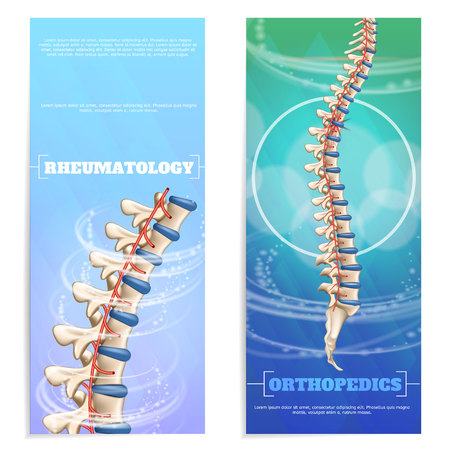Introduction to Electrotherapy in British Medical Practice
Electrotherapy, the therapeutic application of electrical energy, has held a distinctive place within British medical practice since its inception. Rooted in both scientific curiosity and the quest for innovative treatments, electrotherapy emerged in Britain during a period when medicine was rapidly transforming under the influence of new discoveries and technological advancements. The initial interest in using electricity for healing purposes can be traced back to the 18th century, coinciding with the broader European fascination with natural philosophy and early experiments in galvanism. Within this context, British physicians and researchers began to explore the potential of electrical stimulation for treating a variety of ailments, from neurological disorders to musculoskeletal complaints. As scientific understanding deepened and technology advanced, electrotherapy steadily evolved from an experimental curiosity into an established component of clinical practice. This historical backdrop set the stage for further developments, situating electrotherapy as both a symbol of modernity and a testament to Britain’s enduring commitment to medical innovation.
Victorian Pioneers and Early Applications
The Victorian era in Britain marked a transformative period for medical innovation, particularly in the field of electrotherapy. During the 19th century, British scientists and physicians emerged as pivotal figures in both experimenting with and legitimising electrotherapy as a credible treatment within UK healthcare. Their work laid the foundation for the integration of electrical modalities into clinical practice, reflecting the era’s broader fascination with technological progress and scientific discovery.
The Scientific Landscape of Victorian Britain
Victorian society was characterised by rapid advancements in science and technology. The public imagination was captivated by electricity’s potential, fuelled by breakthroughs from celebrated inventors like Michael Faraday and James Clerk Maxwell. In this context, British medical professionals began to explore how electrical currents could be harnessed therapeutically, sparking a wave of experimentation across hospitals and private clinics.
Key Figures in Early Electrotherapy
| Name | Contribution | Institution/Location |
|---|---|---|
| Duchenne de Boulogne (Influence) | Pioneered localisation of muscular stimulation via faradic currents; influenced British practice | France / Adopted by London hospitals |
| Dr Golding Bird | Established one of Britain’s first hospital-based electrotherapy departments; published extensively on clinical applications of electricity | Guy’s Hospital, London |
| Sir William Stokes | Promoted therapeutic use of electricity for neurological disorders; contributed to early guidelines | Dublin & London Medical Societies |
Legitimisation Through Clinical Trials and Institutions
The initial scepticism surrounding electrotherapy gradually waned as British practitioners undertook systematic studies to evaluate its efficacy. Hospitals such as Guy’s Hospital in London became hubs for clinical trials, where treatments were documented and outcomes scrutinised under rigorous Victorian standards. The establishment of dedicated ‘electrical rooms’ within major institutions further signalled the growing acceptance of electrotherapy as more than mere medical curiosity.
Cultural Integration and Public Perception
The burgeoning popularity of electrotherapy was not confined to the elite circles of medical professionals. By the late 1800s, portable electrical devices were marketed for home use, demonstrating widespread societal interest. This cultural acceptance helped solidify electrotherapy’s place within mainstream British healthcare, bridging the gap between experimental science and everyday treatment options.

3. Institutional Adoption and Regulation
The integration of electrotherapy into British hospitals and clinics marked a significant turning point in the nation’s approach to medical innovation. During the late nineteenth and early twentieth centuries, as electricity became more widely available across the United Kingdom, healthcare institutions began to formalise the use of electrotherapeutic devices within clinical settings. This process was driven by both an enthusiasm for scientific progress and a pragmatic search for effective treatments for chronic pain, neurological disorders, and musculoskeletal conditions.
British hospitals, particularly teaching institutions in London, Manchester, and Edinburgh, were at the forefront of adopting electrotherapy techniques. Dedicated electrotherapy departments emerged, staffed by specially trained practitioners who utilised galvanic, faradic, and later diathermy equipment. These facilities not only provided direct patient care but also contributed to the development of professional expertise and a growing body of clinical evidence supporting electrotherapy’s efficacy.
As usage expanded, concerns regarding safety, standardisation, and practitioner competence led to calls for greater oversight. The British Medical Association (BMA) played a central role in advocating for clear guidelines on the application of electrical treatments. Over time, this resulted in the publication of official recommendations concerning device calibration, session duration, contraindications, and patient consent procedures. Regulatory frameworks were gradually established through collaboration between medical societies, hospital administrators, and governmental bodies such as the General Medical Council (GMC).
This institutional regulation not only safeguarded patient welfare but also enhanced public trust in these novel therapies. By embedding electrotherapy within established healthcare protocols and subjecting it to rigorous scrutiny, British medicine ensured that innovation was balanced with accountability—a hallmark of the UK’s evolving approach to medical technology.
4. Electrotherapy in the NHS Era
With the founding of the National Health Service (NHS) in 1948, the landscape of healthcare delivery in Britain transformed radically. This era marked a significant turning point for electrotherapy, as its place within the public healthcare system was both shaped and scrutinised by evolving perceptions among medical professionals, patients, and policymakers.
Perceptions of Electrotherapy within the NHS
Initially, electrotherapy was regarded with cautious optimism. As a modality already established in private practice and voluntary hospitals, its integration into NHS clinics required reassessment against emerging standards of evidence-based medicine. The medical community often debated its efficacy, leading to a divide between enthusiastic physiotherapists and sceptical physicians. Over time, structured clinical guidelines and research reviews began influencing attitudes towards its application.
Accessibility and Patient Acceptance
The NHS’s commitment to universal access meant that treatments once limited to wealthier patients became available on a much broader scale. However, accessibility varied regionally due to factors such as resource allocation, staff training, and local commissioning decisions. Patient acceptance also evolved; while some appreciated non-pharmacological pain management options, others remained wary due to unfamiliarity or mixed outcomes. The following table summarises key considerations:
| Aspect | Pre-NHS Era | NHS Era |
|---|---|---|
| Availability | Mainly urban/private clinics | Wider access via NHS hospitals |
| Professional Attitudes | Diverse; often unregulated | Increasingly evidence-led |
| Patient Awareness | Limited to informed or affluent groups | Broader public exposure but variable understanding |
| Treatment Protocols | Inconsistent standards | Guidelines developed by professional bodies (e.g., CSP) |
Institutional Acceptance and Clinical Governance
The integration of electrotherapy into NHS physiotherapy departments was supported by professional organisations like the Chartered Society of Physiotherapy (CSP). Over time, rigorous clinical governance frameworks emerged to ensure safety and effectiveness. Multi-disciplinary collaboration fostered knowledge exchange, yet persistent debates over long-term benefits led to periodic re-evaluation of its role in routine care.
The Contemporary Picture
Today, electrotherapy is selectively used within the NHS for conditions such as musculoskeletal pain and rehabilitation following injury. Its continued presence reflects both historical legacy and adaptation to modern clinical requirements. Ongoing research, service user feedback, and technological innovation all contribute to shaping its contemporary relevance within British healthcare.
5. Contemporary Perspectives and Technological Advancements
In recent years, the landscape of electrotherapy within British healthcare has undergone significant transformation, shaped both by evolving clinical evidence and the rapid advancement of medical technologies. Contemporary attitudes among British clinicians and patients reflect a more nuanced understanding of electrotherapy’s therapeutic potential, particularly in relation to pain management, rehabilitation, and chronic disease care. While some scepticism remains, especially regarding over-inflated claims from commercial devices, there is growing acceptance of evidence-based applications as part of multidisciplinary treatment regimens.
Innovation in Clinical Practice
The National Health Service (NHS) and private healthcare providers across the UK have embraced new generations of electrotherapy devices, including transcutaneous electrical nerve stimulation (TENS), neuromuscular electrical stimulation (NMES), and wearable biofeedback systems. These innovations not only enhance patient outcomes but also enable tailored interventions that are responsive to individual needs. For example, remote-controlled TENS units now allow for patient-led management of chronic pain conditions from home, reflecting a broader shift towards self-management and digital health integration.
The Role of Research and Regulation
British academic institutions play a pivotal role in driving research into the efficacy and safety of electrotherapy modalities. Collaboration between universities, NHS Trusts, and industry partners ensures that new devices are subject to rigorous clinical trials and regulatory scrutiny by bodies such as the Medicines and Healthcare products Regulatory Agency (MHRA). This culture of evidence-based practice underpins professional trust in electrotherapy interventions and informs ongoing updates to clinical guidelines issued by organisations like NICE (National Institute for Health and Care Excellence).
Future Directions: Technology Shaping Tomorrow’s Care
Looking ahead, technology is poised to further shape the trajectory of electrotherapy in Britain. Developments such as artificial intelligence-driven diagnostics, personalised stimulation protocols, and integrated telehealth platforms promise to make electrotherapy more precise and accessible. Importantly, the British commitment to patient-centred care ensures that these advancements will be evaluated not just for technical merit but for their real-world impact on quality of life. As digital literacy increases among both practitioners and patients, the integration of electrotherapy into mainstream healthcare is likely to become even more seamless, solidifying its place within modern British medicine.
6. Cultural and Ethical Considerations in the UK
Reflection on Public Attitudes
Throughout the historical evolution of electrotherapy within British healthcare, public attitudes have played a significant role in shaping its acceptance and integration. Early skepticism towards electrical treatments was often rooted in a combination of fear, unfamiliarity, and the wider social context of Victorian Britain, where technological innovations were sometimes met with suspicion. Over time, as scientific understanding grew and clinical efficacy became better demonstrated, the British public gradually adopted a more pragmatic stance. In contemporary society, there remains a careful balance between optimism for innovation and concern for patient safety, reflecting a distinctly British inclination towards measured progress rather than uncritical enthusiasm.
Ethical Debates in the British Context
The ethical landscape surrounding electrotherapy in the UK has evolved alongside advancements in medical technology. Historically, debates centred on issues such as informed consent, patient autonomy, and the risk-to-benefit ratio of using electrical interventions. The National Health Service (NHS) has been instrumental in formalising ethical standards, ensuring that electrotherapy is subject to rigorous evaluation and regulation. British medical ethics place strong emphasis on transparency, safeguarding vulnerable populations, and upholding professional accountability. These priorities are deeply embedded within clinical practice and reflect broader societal values regarding trust in public institutions.
Cultural Narratives Unique to Britain
Electrotherapy’s place within British culture is shaped by unique narratives that distinguish it from practices elsewhere. The interplay between tradition and modernity is particularly pronounced; while Britain values its historical legacy of medical innovation, there is also a persistent wariness towards fads or unproven remedies. Media representations—from Victorian-era newspapers to contemporary documentaries—have both sensationalised and scrutinised electrotherapy, contributing to an ongoing dialogue about its legitimacy and value. Furthermore, the collective memory of pioneering figures such as Michael Faraday and their contributions to electromedicine imbues the field with a sense of national pride while reinforcing expectations for ethical integrity.
Conclusion: A Distinctly British Perspective
The cultural and ethical considerations surrounding electrotherapy in the UK are inseparable from broader trends in British healthcare history. They reveal an enduring commitment to scientific rigour, patient welfare, and public engagement—a legacy that continues to inform how new technologies are received and regulated today. As electrotherapy evolves further, these cultural and ethical frameworks will remain central to its future trajectory within Britain’s distinctive healthcare landscape.


